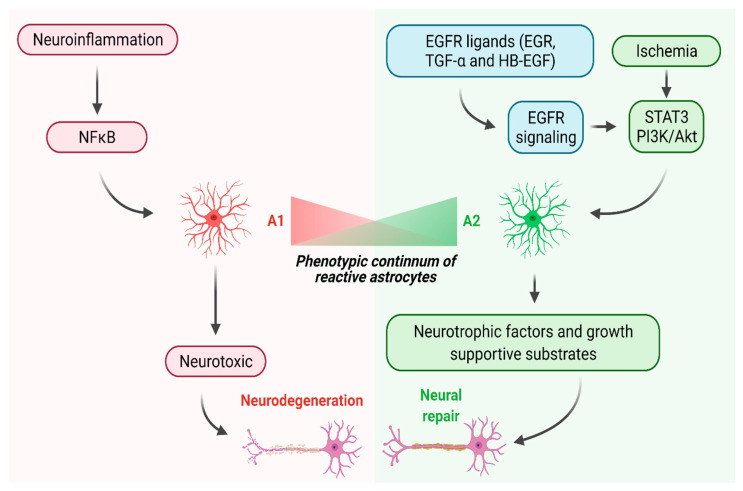Figure 1.
Neuroinflammation and ischemia lead to the generation of A1 and A2 astrocytes, respectively, in the spinal cord. Neuroinflammation may activate the NFκB pathway in reactive astrocytes and induce the A1 phenotype; on the other hand, ischemia may activate the STAT3 and/or PI3K/Akt pathways and induce the A2 phenotype. A1 and A2 astrocytes may exist on a phenotypic continuum. A1 astrocytes may be neurotoxic and promote neurodegeneration whereas A2 astrocytes may release neurotrophic factors and growth-supportive substrates and promote both survival and axon regeneration of CNS neurons. EGFR ligands may induce the generation of A2 astrocytes via activation of STAT3 and PI3K/Akt pathways (created with BioRender.com). Abbreviations: EGF, epidermal growth factor, EGFR, epidermal growth factor receptor, TGF-α, transforming growth factor-α, HB-EGF, heparin-binding EGF-like growth factor, NFκB, nuclear factor κB, STAT3, signal transducer and activator of transcription 3, PI3K/Akt, phosphoinositide 3-kinase/protein kinase B.

